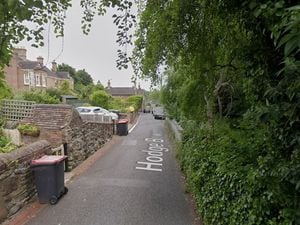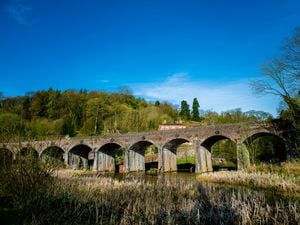Inspector refuses to allow historic boundary wall in Ironbridge to be demolished for parking
A planning inspector has backed Telford & Wrekin Council's decision to refuse plans for an historic boundary wall to be demolished to make way for a parking space.

The council refused the plans last year for a property on Hodge Bower in Ironbridge, which would have seen the front boundary wall removed – with the property dating back to the 18th century.
The plans would have created one off-street gravelled car parking space with an electric vehicle charging point.
Bricks from the historic wall would have been used to create a wheelie bin compound. Plans also included new timber fencing and a garden retaining wall.
When initially refusing the application the council said that the plans would have a ‘significantly detrimental impact upon the outstanding universal value and setting of the Ironbridge Gorge World Heritage Site and the character and appearance of the Severn Gorge Conservation Area’.
They also argued that the development would ‘adversely affect the historic character and appearance of the application dwelling and surrounding area’.
Applicant Elizabeth Steel appealed the decision and government planning inspector Gareth Thomas was tasked with deciding whether the plan would preserve the Grade II listed property at the site and any ‘special architectural or historic features’ that it possesses.
Mr Thomas also considered the extent to which the plans would ‘preserve or enhance the character and appearance’ of the Severn Gorge Conservation Area and on the Ironbridge World Heritage Site.
Applicant Mrs Thomas said that the terraced cottage property, which dates back to the late 18th century, would be ‘entirely undisturbed’ by the proposal which she described as a ‘well-considered design’.
She also argued that creating a parking space would result in improvements to the highway on the narrow stretch of road.
“The narrow road along this section of Hodge Bower is not enhanced by the presence of vehicles parking at the side of the road,” argued the applicant.
“It is not aesthetically enhanced by these vehicles, neither is it practically enhanced by the presence of these vehicles.
“The proposal will future-proof the site of the listed building, ensuring that the property is able to adapt to the contemporary needs of its current and future occupants, while maintaining the site’s contribution to the local area aesthetically.”
She also said that removing the front boundary wall would allow the listed building to ‘better reveal itself’ to passers-by, alongside its terraced neighbours.
In their representations to the planning officer, Telford & Wrekin Council accepted that the existing wall would have formed part of a longer stretch of wall, which has previously been ‘disrupted’.
“This does not set a precedent for further development, but rather outlines the level of harm which has been and would be caused to the setting of the host listed building and row of listed cottages, alongside the character and appearance of the surrounding area as a whole,” the council argued.
“Whilst (planning) officers are aware of the constraints on this section of Hodge Bower in terms of a lack of off-road parking being evident, the significance of the historic value of the host designated heritage asset and those surrounding the application site need to be considered.
“The public benefits in this instance are not therefore considered sufficient enough to outweigh the level of harm caused.”
The planning inspector refused the planning appeal and concluded that the boundary wall close to Hodge Bower ‘adds considerably’ to the character and appearance of the Severn Gorge Conservation Area and to the industrial landscape character of the Ironbridge Gorge World Heritage Site.
“There is a strong architectural and historic association between the wall and the listed building and, together with its containing outbuilding structure, are factors that reinforce the historic significance of the wall in the context of this listed building,” concluded Mr Thomas.
“Moreover, it would lead to a further fragmentation of the prevailing historical character and result in the permanent loss of a substantial quantity of historic fabric that adds considerably to the special interest of the listed building.”
Mr Thomas also concluded that the identified benefits are ‘largely’ private benefits.





